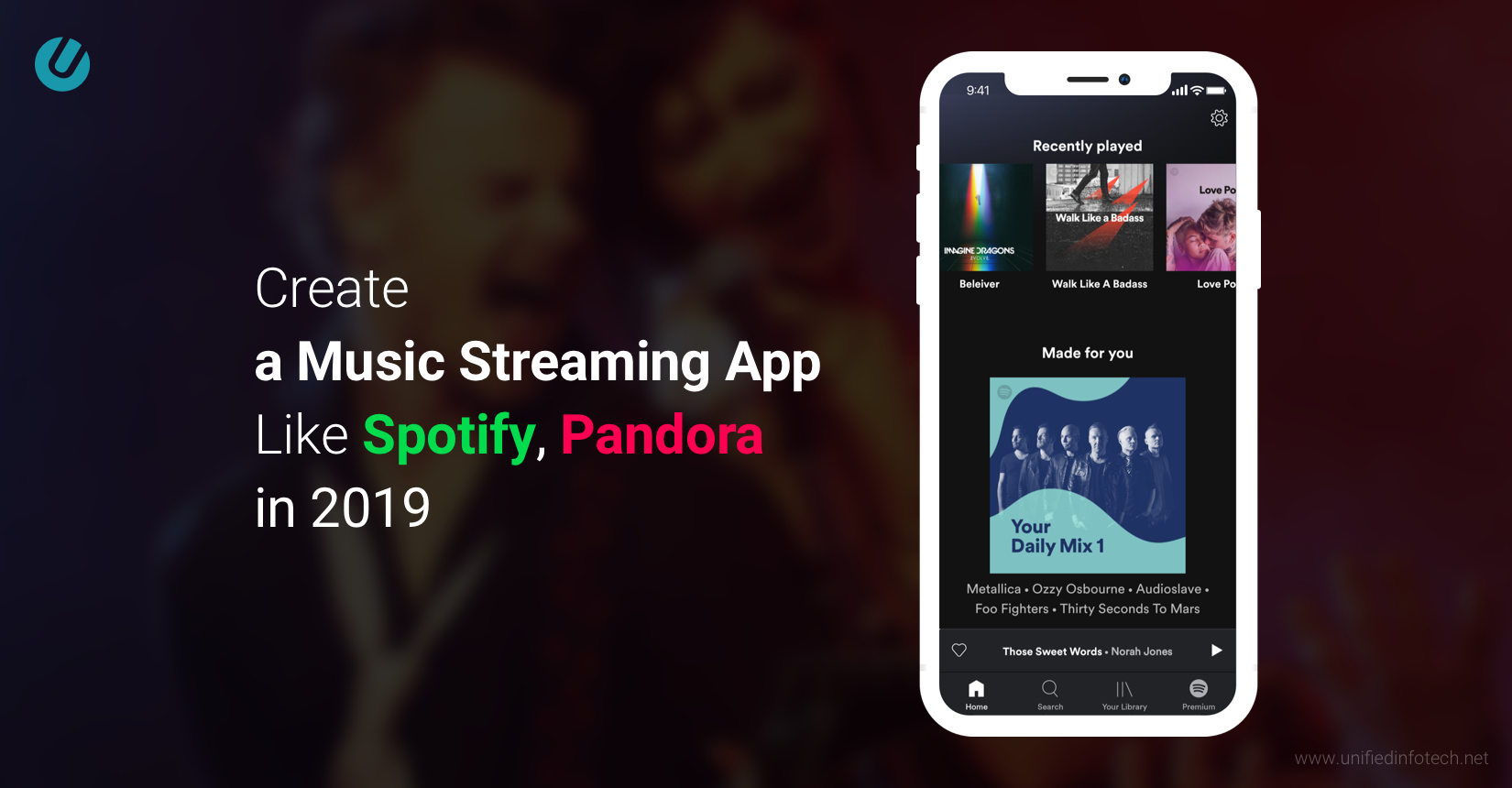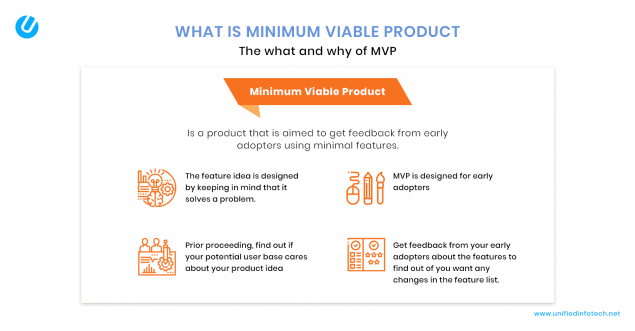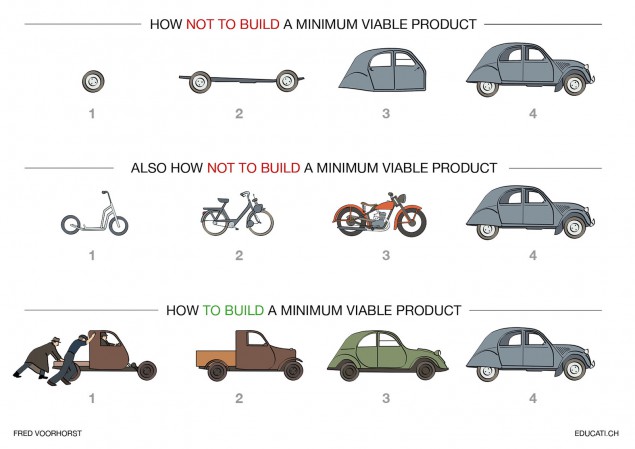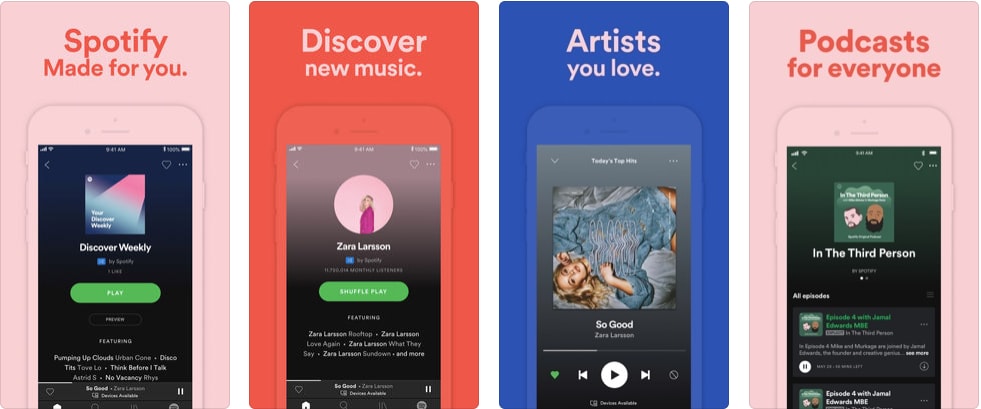Unlock Expert Advice with Zero Commitment.
We’ve Eliminated the Barriers.

Who doesn’t love to tune into their favorite piece of music on a gloomy day?
Or at a house party?
Whatever be the case, music is LIFE.
The way it connects with human emotions, it is no surprise that music streaming app are mushrooming all over the app stores.
Now that ‘s one of the major reasons why business-minded people are looking to create music streaming apps. They are eyeing on the opportunities that come with it. But, what do you need to know before you start with building the app?
Do you have an idea in mind but looking for feasibility analysis on the same?
This post is well crafted for you to kick start with your idea. Let’s’ find out how to create a music app.
Now that you know that music apps can make pretty good money for their owners, you are probably dying to make your own app and start making money with it. But it’s not so easy.
Here is a step by step process –
Before you start with some serious research on how to make a music app, you need to know about a couple of things.
The market is loaded with many music streaming apps. Consequently, new features are introduced intermittently. This opens up new possibilities each day.
Ever thought why Spotify made it to the top spot in the market of music streaming apps? It is claimed to be one of the premium streaming service providers. BusinessWire, in its research, revealed the revenues Spotify generated a humongous 1.5 billion USD in the third quarter of 2018. Out of this, USD 1.35 billion was channeled from Premium subscribers. Ad-supported Spotify users generated USD 160 million for the service provider. Therefore, it is evident that Spotify has been on a steady revenue generation streak since its launch in 2008.
And this is why you need to chalk out the business scope and detailed path of the application development for the desired outcome. Spotify took their business seriously and defined their market scope to decide on their target audience and the revenue generation process they could use. So it is essential to identify the target audience. This factor will outline the interests and features to be incorporated into the application. It aids to identify the MVP (Minimum Viable Product). With time the company can add features as per preferences.
Whatever app you are making, you have a target audience. If you don’t, then go back and define your target audience. Without them, your app is going to have a hard time making you money.
Now you are thinking that these apps don’t need a target audience, everyone listens to music, right?
Turns out, not everyone is listening to the same music streaming app. According to this detailed look into the audience of different streaming apps, turns out, there is a major difference depending on the platform.
Streaming services like Soundcloud attract more tech-savvy gamers as their audience. These are the people who would get a new gadget within a week of it being released. Pandora users, on the other hand, are more financially well off, and there is a large number of women among the Pandora app crowd.
Spotify is meeting the middle ground, with social media-loving millennials as their audience base. Each music streaming service has its own audience base. And they cater to their needs.
So, who is going to be your target audience? Determining a target audience is going to help you in choosing the right monetization strategy and make you big bucks. So decide on your audience before jumping onto the next step.
You can’t just play the music without permission.
No, we are not talking about the angry neighbor complaining about your taste. We are talking about the license and permission required to make your music app a legitimate musical environment.
First, you need the Public Performance Rights for your app. In the US, you can get it from any of these three agencies- The American Society of Composers, Authors, and Publishers (ASCAP) or Broadcast Music Incorporated (BMI). In Europe, you can get this license from European Stage Authors and Composers (SESAC)
Are you thinking about skipping on this licensing matter? You should know that when a song is played on your app without permission of the label and the artist, you will have to pay a fine of $700-$150,000 per song, every time it is played.
Naturally, the next step after defining your target audience and acquiring the proper license is the development process. So before you decide how to make a music app for Android or iOS, layout a plan based on these steps.
Before engaging in this step, research in details about how music streaming app work and how to make one.
The heading may baffle you a bit, so let us explain.
There are two different kinds of music streaming apps.
Online Radio apps – works as a replacement for radio. You can stream music online, but you can’t choose what to listen to. The app will decide for you, based on your preferences.
On-demand music streaming app- plays music whenever, wherever, required you have a strong internet connection. You can create playlists, and choose which you want to hear. Shuffle and repeat all you want.
Developing this kind of system is an incredibly different process. So make sure you choose one before starting with the development process.
A prototype is a basic step towards developing an app. In your music streaming app development process it is the first-hand representation of your app. With the prototype, you can conduct beta-testing among a small selected group of beta-testers. Their feedback is going to help you to make your app better.
So before making an app like Spotify, make a prototype first. This will let you know what you are doing right, and what you are doing wrong.
A Minimum Viable Product or MVP is a basic mobile app with only the most necessary features in it.
Before you make an app that is full of amazing features, try to go with the MVP approach. Once you have your basic music streaming app, you can release it and gather feedback on it. And then use those feedbacks to improve your app farther.

With this approach, you can slowly but surely build the perfect music streaming app. Rather than using the trial and error method, the MVP approach lets you utilize the user feedback to slowly build your app, incorporating different features into your app.
Also, with the MVP approach, you can understand your target audience well, and what works for them and what doesn’t.

It is a pitstop before developing a fully functional app with all the features. This approach involves minimum coding and custom features. It is an evaluation of the business assumptions and necessary changes can be made from the outcome. This approach will help you with a clear understanding of your app. This clearly shows what works and what doesn’t.
So when you are wondering how to build a music app like Spotify, do go overboard with the features in it. Rather choose something unique for your own streaming app idea. Develop an MVP with one of-of the most important features and launch it in the test market. It’s all about understanding and evaluating the response. And then develop the rest. If you need help sorting your features and MVP, take consultation from us. Our experts will validate your idea and suggest you the best road map to success!
Let’s talk about the features that you need to focus on.
Looking at a long-form to fill for a service is a tiresome process, especially for something that’s supposed to be fun, like music streaming app.
Since the registrations process is the first thing your user is going to interact with your app any bumps, and users will be completely discouraged with your app, no matter how perfect it may be.
Besides email and phone number registration, adding social media registration is a good way to make the login process seamless. Having a simple process for sharing songs online is going to give your streaming app the right kind of exposure.

Source: iTunes
One of the main reasons why Spotify has become so popular is the user-specific song recommendations on the home screen. The advanced search option can aid in finding a song according to genre, artist or other interests. And there is also a “Your Library” feature which lists the user playlists, favorite songs and artists and much more.
So if you want to compete, then you have to make it easy for the user to find his favorite song. An advanced search option helps the user to find songs according to mood or artist and keeps up the engagement quotient high. The user must be able to find his favorite track within a few clicks. Include smart filters in your music app. This aids in minimizing the number of options to surf through. Added to that Spotify can also take your voice commands. You can tell the app to play a certain song or show artists’ songs and albums. So don’t forget the voice recognition feature.
People today love sharing their activities through social media. Whether watching a movie, having dinner or listening to their favorite tunes. Which is why your app needs the social sharing feature. By giving your users a socially musical experience with convenient sharing options on various platforms, you’ll be creating a positive vibe for your brand.
This will, in turn, give your brand a positive exposure on social media.
Let’s face it, the collection of songs is the backbone for your app.
In case you decide on going with the on-demand music app, you will need this feature more than anything.
In an on-demand platform, the user will want to arrange and sort their music based on mood, genre, and their favorites. So you need to give them the ability to create their own playlists.
Apps like Spotify are also implementing the feature of Artist Radio playlist option. This feature offers to stream personalized songs as per user preference based on an artist. Regular updates are available in this segment. Additionally, there is a download option also. Hence, the user can enjoy songs offline. And these are all the features you should be considering for your music streaming app.
What happens to your app when there is no internet?
Yes, even at this internet age there are places in this world where you may not find any internet. And if there is no internet, how are your users going to use your apps?
The answer is simple- offline downloads. With this small feature, you can allow the users to download their songs offline so that they can listen to it even when they are in the middle of the Sahara desert, with no internet.
Just like identity, every user has his own music footprint in terms of artist choices or genre. On-demand playlists can be very effective in this case. It allows the user to pick and play any track from a pre-curated playlist. The recommendations can be made to the user based on his previous choices and preferences. You can add a Tap option to the tracks so that users can smoothly add songs to their favorite playlist.
Spotify’s all-new search page shows the albums and artists as per user preference. It is also useful for exploring new music areas and genres as per mood and interests. For any music app creation, you have to have a user-centric UI that appeals to the mass. This user-specific feature will make the users more content with the app and they won’t be moving on to any competitor.
Along with in-app advertisements, subscriptions are one of the ways you can make money with your music streaming app.
You can provide app users with free music, with ads at regular intervals. But it should not be too frequent. With a subscription, you can give them ad-free music and access to premium audio content for a monthly payment.
Another way is through premium subscriptions. The users pay for ad-free music and access to premium audio content.
When brainstorming about how to make a music app, you may wonder about how to keep people hooked to your music app? Simple, use the power of pushed notifications.
It’s the best way to let the user know when a new track is released or a new offer is available for them. This will keep them engaged with your app.
Live streaming can be an attractive addition to your music app. Through proper channels, you can stream live concerts and performances of various artists beyond boundaries. This helps in keeping up with the newest music trends and user interests.
Even when it comes to music streaming app, privacy matters. According to this report from Buzzfeed News, some people might even harass the users of music streaming app using their streaming habits. And that’s why you need to include a privacy setting to make sure that the users feel secure to use your app.
If you do not want your certain specific music interest to stick to the “Discover Weekly” playlist, then you can flip into the “Private Session”. For added convenience, it turns off automatically after inactivity of 6 hours. It also protects the privacy of the user in case someone plans on a sneak peek into the app.
Just because you are making a streaming app doesn’t mean you are going to neglect the matter of security. The importance of app security should always be in consideration while making an app.
The login and account details your users are going to enter in your app during registration and subscription is going to be stored in the backend of your app. And you need to take proper security measures for that backend. Otherwise, the user data might get stolen. This will ruin the reputation of your app.
Now that you know what features to integrate into your app, you must be thinking about how much does it all cost?
The cost of developing an app is influenced by many factors. The cost to develop a music app is going to be affected by the tech stack used and hours spent on it by the developer. So how much is it going to cost to make an app like Spotify?
But after you have invested to make a music streaming app, what should be your monetization strategy? Let’s find out.
Making a music app and a website along with it now go hand in hand. Every major music streaming service has its own website along with a music app. So just finding out about how music streaming app works and how to make them is not going to be enough.
Just like making a music app, you need some specific features in your music streaming website. Without those features, your website is not going to be functional at all.
The things you have to keep in mind while creating a music streaming website-
The business model is related to how you are going to make money with your app or your website. As with the app, you can go with the basic business models, which are
Ad-based business model, which lets you play ads between the songs at regular interval. These ads generate revenue. And then there is the subscription method, through which you can offer your listeners premium features such as ad-free music experience.
The homepage layout is the first thing your listener is going to interact with when they visit your website, so make it as catchy and easy to navigate. With an interesting background, add a search tool, so that your user can search their favorite songs right from the homepage. While you develop your music streaming app, make your homepage easily navigable.
Create a dedicated browser page for your music streaming website. The page should feature popular music and artists for easy and quick searching. Along with that, add a suggestion, that suggests the visitor new songs based on the songs they have already listened to. This will make browsing easier for them.
Album and artist page is important, cause your listeners to want to know what they are listening to. So adding these pages to your website is necessary.
The album page needs to be simple, just with the list of songs and the date the album was released. You can also add a section where you include interesting information about the song or the artist to hook your website visitors.
You obviously need a music player plugin for your online music streaming website. The only two things to talk about this specific feature are the position of the music player and the options it offers.
Ideally, a music player is positioned as a sticky footer. But you can also try to change things up by putting it on has a sticky header. As for the options available in it, you should go with the options play/pause, stop, previous and next options. Along with that, don’t forget to add a volume up/down the bar, and repeat and shuffle button.
Additionally, you can also add download and favorite button. But remember, adding too many buttons on the player can make it feel cluttered.
It’s a standard procedure for all music streaming websites and apps to have a playlist feature. So don’t skip over this one.
Letting the music listeners on your website make a playlist for their music is going to make them want to engage more with your music streaming service. You can also offer them specially curated playlists based on their listening history.
This is a unique feature. By letting the users add their own music to the website, you’ll be giving them a chance to express their creativity. It can also be a great way for you to generate revenue by charging them to upload their own songs to the website.
Other than making the registration process seamless by adding log in through social media, you need to give them a proper user profile page as they log in.
With the user profile page, they can manage their subscriptions, playlists and other details about them. They can connect with other users like in any other social media and share their music easily. This feature will increase the engagement level of website visitors.
The FAQ and support section needs to be properly organized to help the users with any kind of problem they might be facing. Adding a custom search bar can help them find their query easily. They should also be able to ask their own questions.
Let’s face it, the baseline for any business is revenue. You definitely want to generate profits from your music app, right? So how does Spotify makes money? Being a market leader, it has one of the most effective business models in the world.
It has two-way revenue generation. One is for ad-supported users where the profits flow in from the adverts played in between music tracks. Another is through premium subscriptions. In here, the users pay for ad-free uninterrupted music along with access to premium content.
You can plan your subscription plan according to the Spotify architecture as well. It is effective and churns out profits in a dependable manner.
Still thinking about how to make a music app? Well! Just give us a buzz!
Ready for the showdown on how to create a music app for Android or iOS?
Well, it is evident that there are many popular streaming music apps in the market. But the segment is pretty dynamic. Hence, there are no chances of saturation any time soon. If you strike the right cord, you can create the right melody for a standout music app.
Have an idea about the music app but still thinking about how to put it to use? Well, we are just a call or a click away!
We’ve Eliminated the Barriers.
We stand by our work, and you will too.